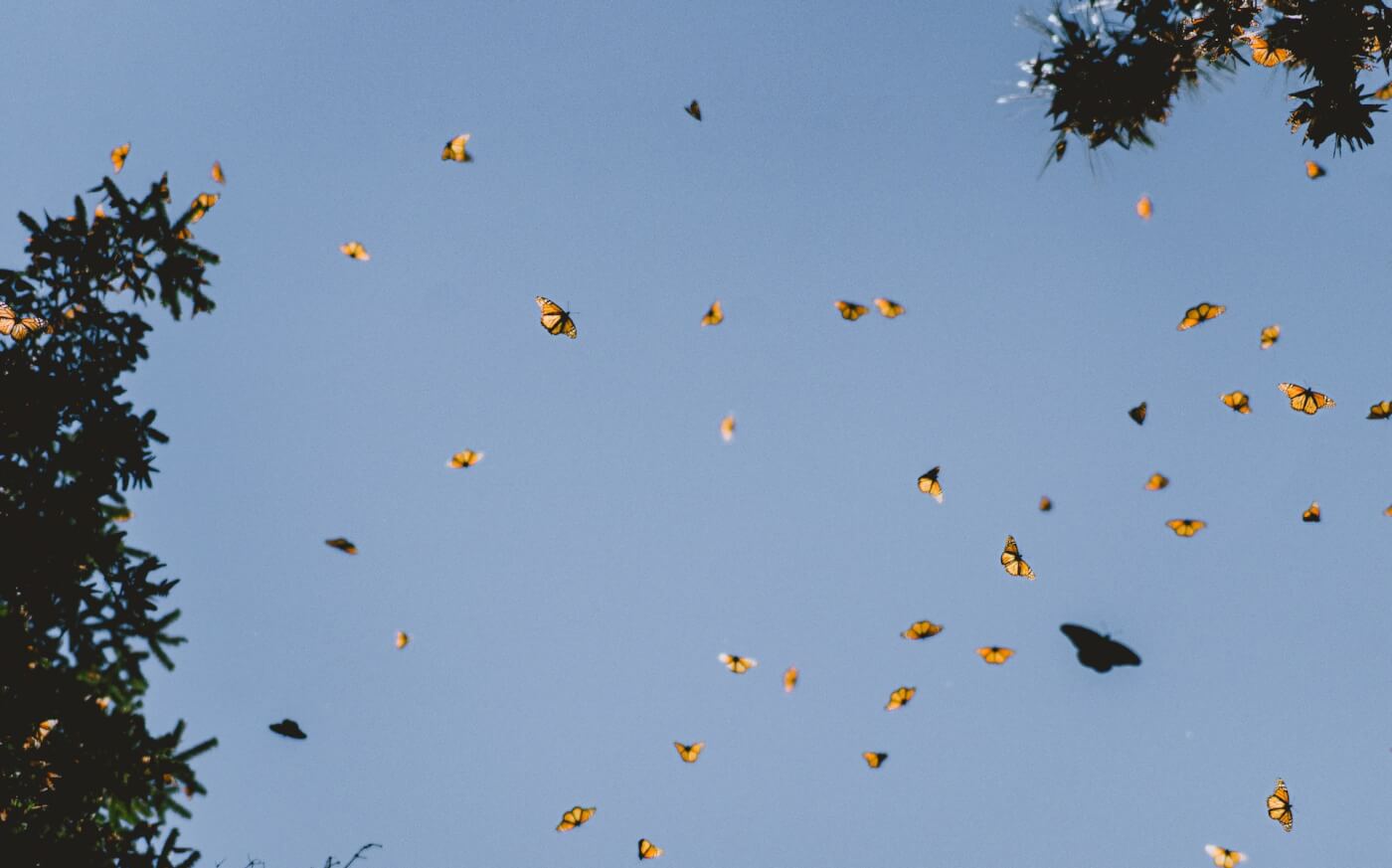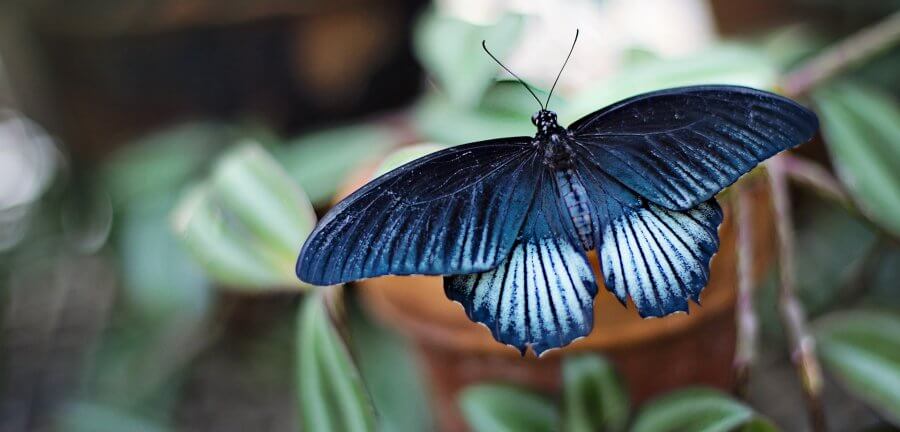Several years ago, while working as the director of a local humane society’s summer camp, I had the “bright” idea to build a butterfly garden. I thought the kids would love planting the butterfly-friendly plants that had been donated by a local garden shop and caring for the pupae and butterflies. I even went as far as building a screened pavilion in order to protect them from predators and give them a place to test their wings before flying away.

I found a company that sends butterfly kits through the mail. I ordered a few hundred butterflies in various stages of life—larvae, cocoons, and a few adults. I wasn’t sure what to expect, but I had this idea that the butterflies would arrive in an enormous box with air holes in it and that the butterflies would be fluttering about inside. The company shipped the package overnight from a city that was only a three-hour car ride from my house, so I didn’t think much about the whole transaction.
Imagine my shock and horror when the butterflies arrived in tiny envelopes, with their glorious wings flattened and in a state of forced hibernation! While I stood with a gorgeous butterfly resting on my finger, I berated myself a hundred times over. Fighting for this insect’s life, I found a way to unfurl the tiny proboscis and watched as the butterfly sipped sugar water from a bottle cap, praying that this little guy would make it. I can’t tell you how dreadful I felt at my own complicity in commodifying the life of such a beautiful being. When I discovered that some butterflies had arrived dead, I knew that I was responsible for their demise. Surely, there must be a better way to teach children about the life cycle of an insect than to risk the life of a butterfly. Since then, I have made a pact that I will never purchase butterflies (or any animals) again and that I will try my best to inform everyone I can about the cruelty involved in this industry.
It’s heartrending to think that this scenario plays out dozens of times a day all over the world for things such as butterfly gardens and weddings.
White doves, for example, are bred to be exploited by thoughtless event planners. Sending them into the air after confining them for their entire lives is tantamount to abandoning an animal companion in the woods 10 miles from home—and it should be illegal. The initial release confuses doves, especially if it’s done at night (when many celebrations take place). Doves are diurnal, so setting them off at night already puts them at a disadvantage. In the confusion of the moment, the birds typically disperse and fly off into the dark. Come morning, they’re on their own. Because doves are flock animals, they have very little chance of surviving in solitude. Unless they’re lucky enough to find a flock of other doves or perhaps pigeons to join, they won’t survive. However, even if they do find other birds to welcome them, the disoriented doves will remain easy targets for hawks and other predators.
Butterflies, too, have a tough time surviving in an unfamiliar habitat. They live in a variety of climates around the world, and when they’re transported away from their natural habitat, they often can’t find food sources. Because of the seasonal nature of many butterfly species, some who are released at parties face a climate that they simply can’t survive in.
I’d love to see people go back to the basics of celebration: music, carousing, and dancing.
To this day, I’m sorry about my poor judgment at that summer camp. I hope that by sharing my story, I can persuade even just one person not to purchase butterflies and to speak out against butterfly and dove releases whenever they get the chance.
Like many PETA activists, I, too, am an animal rescuer. I have bottle-fed kittens and given tender, post-operative nursing care to wounded animals. I find solace in knowing that I will never again have to hold a dying butterfly on my finger just because I was careless with a credit card.
Celebrate Special Occasions With Kindness, Not Cruelty




